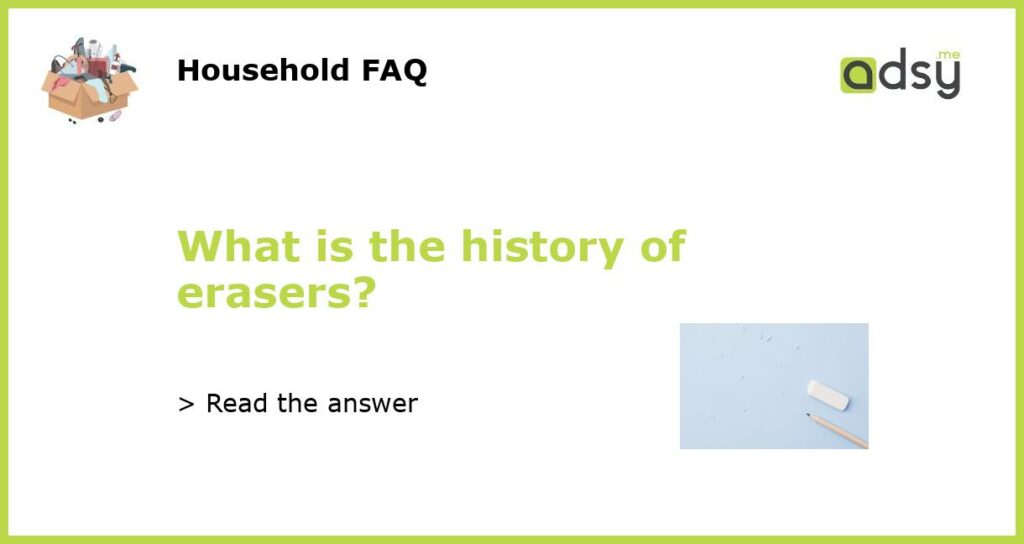The Beginnings of Erasers
The history of erasers can be traced back all the way to the dawn of writing. Ancient Egyptians used sandstone and pumice to scrape away mistakes on papyrus, while the Romans used bread crumbs or wax tablets to erase mistakes. It wasn’t until the late 18th century that erasers resembling the ones we use today began to emerge.
The First Rubber Erasers
The first rubber erasers were created in 1770 by Edward Nairne, a British engineer. He discovered that a substance called india rubber could be used to remove pencil marks from paper. This early version of the eraser was not very efficient, but it was a major breakthrough in the field of stationery.
The Mass Production of Erasers
In 1839, Charles Goodyear discovered the process of vulcanization, which involves heating rubber with sulfur to make it more durable. This allowed for the mass production of rubber erasers, which quickly became popular among writers and artists. Erasers were now widely available and affordable, making them a staple in every pencil case.
Advancements in Eraser Technology
Over time, erasers continued to evolve. In the early 20th century, erasers were made with synthetic rubber, which was more effective than natural rubber. In the 1950s, erasers with plastic handles and retractable mechanisms were introduced, making them more convenient and less likely to get lost. In recent years, erasers have become more specialized, with some designed for specific types of paper or ink.
The Future of Erasers
As technology continues to advance, it’s likely that erasers will continue to evolve as well. Some companies are already experimenting with erasers that are more eco-friendly, using materials like recycled rubber. Others are exploring erasers that are more effective at removing ink or other types of media. One thing is certain: erasers will always be an essential tool for anyone who writes or draws by hand.






